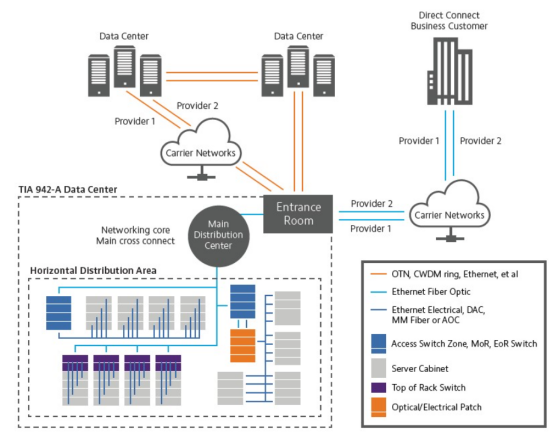
Data Center Interconnect (DCI) technology connects two or more data centers together over short, medium, or long distances using high-speed packet-optical connectivity.
Data Centers house compute and storage resources for applications, data, and content. And in this cloud-based, application-centric world, access to that data is a critical challenge.
Data Centers need to talk to each other—to share data and content and provide back-ups for redundancy. Fortunately, DCI technology enables the transit of critical assets over any distance, from across town to ultra-long trans-Pacific or trans-Atlantic oceanic links and everything in-between. Data may be carried across simple, point-to-point connections, more robust ROADM-based networks, or open line systems which support transport interfaces sourced from multiple vendors.

Distance requirements for DCI applications vary from metro to subsea
The most effective transport technology for DCI is next-generation coherent optics providing blazing speeds up to 800Gb/s per wavelength. With a fast, reliable connection in place, physically separate data centers can easily share resources and balance workloads.
Fiber optic DCIs can be divided in 3 categories, based on the transmission distance:
· Campus DCI: typically within 5km max, interconnecting multiple data centers of the same campus
· Metro DCI: within 100km, this is the interconnection between data center campus, within a region and/or availability zone.
· Submarine: ultra long-distance data center interconnection , with hundreds of kilometers, using undersea fiber optic cables

Optical DCI networks, also known as point-to-point, utilize a multiplexer/demultiplexer at each site connected by the fiber optic cable between the sites. The multiplexer takes in (adds) the individual transponders wavelengths, combines them and transmits them to the other site on one fiber. On the other fiber, the demultiplexer receives wavelengths from the other site and separates (drops) them back out. Working together, this provides up to 96 bidirectional, individual connections or circuits between the two sites, the equivalent of 192 individual fibers.
The image below illustrates a point-to-point network. Routers, switches, servers, etc., connect to the transponders. The transponders connect to the multiplexer and demultiplexer. Typically, each site has an amplifier that increases the optical signal enabling it to reach longer distances. Then the amplifiers connect to the fiber between the data centers. All of this fits into a tiny footprint within the data center; an average system occupies six to eight rack units (~7" – 12").

Conclusion: Optical DCI networks provide high bandwidth, fast scaling and cost-saving solutions for multi-site data center environments.





 INQUIRY
INQUIRY